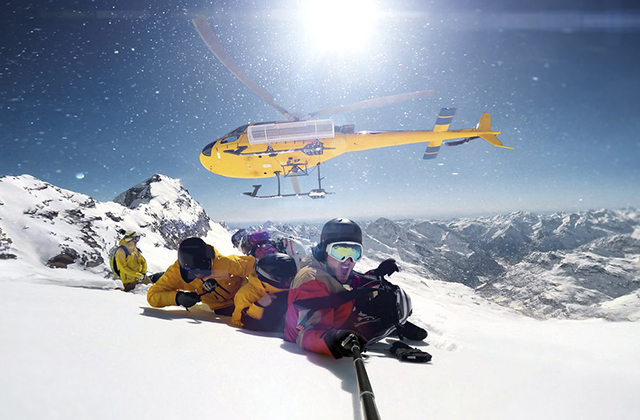Introduction
Many organizations today are seeking to accomplish several main goals with regard to e-learning. The number one goal of e-learning (also referred to as distributed learning) is knowledge management, where both explicit and implicit types of knowledge can be archived and exploited for organizational use. For most organizations, the goal of developing interactive media instruction (IMI) relates to this overarching goal, by creating instructional or training materials that can be used to help workers to perform better on the job. Instructional systems design (ISD) theory promotes best practices in terms of both development and implementation of e-learning initiatives. In a very real way, the ISD process provides a road map for creation of training products, helping courseware developers to tailor their product to the knowledge and training needs of learners. Concept Artist tend to work in entertainment fields, where the creation of non-existent entities is in constant demand.
One main criticism of IMI has been a charge that much of the courseware built for asynchronous learning platforms is plagued by low affective and social stimulation as well as by a purely presentational characteristic (Hines & Pearl, 2004). Another criticism of instructional design practices within e-learning communities is that such courses only give the learner information in the form of page turners. This sentiment is often summarized by the phrase “information is not instruction” to warn of the perils of expecting knowledge to come solely from exposure to information.
A central challenge to instructional designers is to create learning events using interactive media platforms and learning objects which inspire critical thinking, application of concepts, and synthesis of ideas. For example, the use of Performance/Knowledge pairs in the design of courseware serves this objective. Under this paradigm, the instructional designer identifies and concept or principle (knowledge) which is reinforced by providing the learner with opportunities to apply that concept or knowledge piece in problem solving.
The Instructional Design Process
The Criterion Referenced Instruction (CRI) framework developed by Robert Mager is a comprehensive set of methods for the design and delivery of training programs. CRI critical aspects include: (1) goal/task analysis — to identify what needs to be learned, (2) performance objectives — exact specification of the outcomes to be accomplished and how they are to be evaluated (the criterion), (3) criterion referenced testing — evaluation of learning in terms of the knowledge/skills specified in the objectives, (4) development of learning modules tied to specific objectives (Kearsley, 2006).
Applying Principles of CRI:
1. Instructional objectives are derived from job performance and reflect the competencies (knowledge/skills) that need to be learned.
2. Students study and practice only those skills not yet mastered to the level required by the objectives.
3. Students are given opportunities to practice each objective and obtain feedback about the quality of their performance.
4. Students should receive repeated practice in skills that are used often or are difficult to learn.
5. Students are free to sequence their own instruction within the constraints imposed by the pre-requisites and progress is controlled by their own competence (mastery of objectives).
Using the ADDIE Process
The ADDIE process is another heuristic procedure which can be used to great benefit when planning events associated with building content for an IMI course.
Beginning with the analysis phase, a complete instructional design plan should include answers to the following questions.
1. What is the instructional problem and are there any specific goals for the instructional program itself?
2. What are learner characteristics and how will that influence your instructional decisions?
3. Have you identified both the subject content and task components that relate to the instructional goals and objectives?
During the design phase, it follows that the next logical step is to address issues related to the makeup of the course content, which encompasses the main objectives for the instruction. Specifically, once the objectives have been identified, it is time to develop the proper sequence for the instruction. The following questions can be reviewed.
1. How will the content be sequenced within each instructional unit?
2. What instructional strategies will be used so that learners can master the objectives?
3. What resources will be made available to the student?
4. How will learning be assessed?
Design of IMI Courseware
The actual design of interactive courseware requires a bit of artistry as well as an understanding of pedagogy. There are a few basic design principles of interface design that more bits of wisdom, and aesthetic judgments about what is pleasing to the eye than rules or guidelines. In order to create quality instructional experiences for the learner, the interface designer’s role involves creating navigational ease through effective use of windows, backgrounds, icons, and control panels (Vaughn, 2004).
In terms of best practices for exploiting technology and multimedia for teaching, indications are that e-learning can be best facilitated through well-designed courses using several types of instructional media with differing characteristics (e.g., synchronous vs. asynchronous, high-bandwidth vs. low bandwidth, contextualized vs. decontextualized). The interface design chosen should be consistent and aesthetically pleasing to orient the learner and gain their attention.
The use of storyboards as a planning tool allows design teams to describe a project in detail, by using sketches and words to define screen images, sound, navigation choices, colors, fonts, and text content (Vaughn, 2004). The advantage of creating storyboards-either more or less detailed-is that they allow you to see what design elements will be required before beginning work. For example, based on the design of the storyboard, a design team may choose to task different project implementation steps to specialists (for e.g., graphic designers or multimedia specialists) who can lend their expert talents and capabilities to the overall project management plan. A simple way to get started with storyboards is by using a PowerPoint program to capture the main concepts for a given presentation or lesson.
Page Layout
Creating a basic page layout should be planned as follows. First, organize the information on the web page clearly and in a logical flow. Place adequate amount of information on a screen. Use shorter lines of text if the web page is intended to be read on-screen. Place the important information at the top of the web page. Appropriately use white space to increase the page’s visual appeal. And finally, choose the right screen size to design the course web pages.
Navigation buttons are common elements of navigation (“back”, “next,” “forward”) so that the learner can move through the material. Buttons or navigation arrows should be placed at the edge of the screen. The reason for this is mostly ergonomic: It is easier to move the mouse to a target at the edge of the screen than to one somewhere in the middle. At the edge of the screen, the boundary of the display acts as a visual, or actual, bumper to quick motions.
Also, primary information-regardless of ergonomics-should be located near the optical center, with secondary information at the edges: A reader’s eyes are most likely to follow a path from the center outward. Finally, for psychological continuity, orienting information should be placed at the top or the bottom of the screen, depending on whether it relates to the preceding or following screen, respectively.
Use of Color
Color standards are paramount to maintaining consistency throughout a web site. For page backgrounds, a neutral color, such as white, should be used because it provides the greatest contrast with most colors, which contributes to the property of readability, supports a variety of color text and icons, and bears greater similarity to traditional print pages, which are the basis for most graphic design and communications conventions. It is important to note that some pastel colors and combinations of colors are unreadable to those with color blindness and other visual disorders. Acceptable alternatives to a neutral background are the official university colors.
Using Graphics
There is a qualitative difference between the processing of information in the left brain (which generally considers text) and the right brain (which generally considers images). New material is processed and understood most effectively when it is given a number of different representations. Most authoring systems allow the user to create multimedia objects such as text, buttons, vector-drawn objects, and bitmaps. Graphics can be used to add mental dimensions to:
o Descriptions of real-world or imaginary settings.
o Descriptions of complex relationships.
o Numerical data.
o Requests for reader interaction.
Use of Sound and Video
Suffice to say, the fact that we live in a digitized world suggests that as students become more adept consumers of digital media, their expectations in the classroom increasingly involve digital media as an instructional delivery mode. Audio resolution (8, 16 or 32 bit) will determine the accuracy with which a sound can be digitized. However, it is proper to suggest that although streaming technologies offer a lot of promise for the delivery of audio and video through the Internet, audio and video should be used sparingly in web based training, due to issues of bandwidth and user access. An important side note is that when video is a major element of an interactive design, a high level of detail is necessary in the storyboard to ensure that the video producer has sufficient information to get an accurate video shot. However, if you incorporate streaming technologies, the users may need to download and install plug-ins. Because of the frustrations that plug-ins can cause, it is important to consider all alternatives prior to using them. Not only are there many versions of plug-ins, but they are constantly updated, and can be tricky to install and therefore it is better to use media elements only when they are essential to the instruction (Baron, 1998).
Using Links
When hyperlinks are used, they should serve as a way for the learner to access additional course material via the web. Some more specific examples of reasons for the creation of a link are as follows:
o provide additional information and examples so that learners can probe the topic in greater depth
o cross-reference items
o instruct learners to carry out a task (for example, a form of help)
o provide a help system
o provide a glossary
o provide footnotes
o provide contents lists
o provide illustrations to support text
o provide text to support an illustration
o connect the different aspects of a topic (similar to an index).
Developing the instruction
In order to prevent excessive cognitive load, instruction should progress from simple to complex, allowing learners to start out by working on tasks that represent relatively simple versions of the whole task. Learning tasks that are poorly designed or that involve the complex integration of multiple ideas, skills, or attributes, results in increased cognitive load and decreased learning (Mishra, 2004). An additional consideration in the development of IMI instruction relates to the use of what are referred to as authentic tasks. Learning activities should engage the learner in authentic tasks, which enable students to immerse themselves in the culture of the academic domain, much like an apprentice (Mishra, 2004).
Options for Evaluation of Courseware
Instructional designers have a several models from which to choose when looking at how to evaluate the overall effectiveness of a newly developed training product. At this point, I’ll mention two of these models; they are Kilpatrick’s 4 Levels of Evaluation and Dick and Carey Model. The Dick and Carey model of evaluation is based on three means of formative evaluation: one-to-one, small-group, and field evaluation. Kirkpatrick’s 4-level evaluation model, developed in 1976, is another model used by Instructional Designers in the domain of evaluation. The four levels of evaluation are: reactions, learning, transfer and results. Evaluation at level 1 – reactions, measures how participants react to training. It attempts to answer questions regarding the perceptions of the participants. Did they like it? Was the material relevant? Overall evaluation attempts to assess the learner satisfaction. In level 2 evaluation – learning, evaluation assesses the amount of learning that has occurred in a training program. Tests and pretests are used at this level in the evaluation process. Level 3 evaluation – transfer, measures the transfer that has occurred in learner’s behavior due to training. A question a designer may ask at this level is: are the newly acquired skills, knowledge, or attitude being used in the learner’s everyday environment? If yes, transfer has occurred. Level 4 evaluation – results, measures the success of the training from a managerial level in terms of increased production, improved quality, decreased costs, and return on investment (Lipka, n.d.)
The evaluation process for the instructional designer involves looking at the overall quality of the product and its appropriateness for meeting the client’s needs. With regard to this phase of the ADDIE process, the evaluation phase is driven by a search for the answers to the question: Have we solved the problem? In this regard the instructional designer may want to develop surveys which can be completed by persons who have completed the instruction. Additionally, interviews-essentially ethnographic research-can be conducted with course participants to determine levels of user satisfaction and overall effectiveness of the instruction. What is the impact? What needs to change? Finally, a piece of courseware might be utility tested and evaluated by a direct comparison of its performance against that of some reasonable alternative, such as an older training product or the traditional teaching it replaces.
Summary
Preparing for the design and development of interactive media is by no means as simple as described in this short paper. Rather, designing interactive media and other e-learning courseware is an iterative process, which typically involves a team effort when properly done. A myriad of skills and expertise should normally be brought into the process in order to ensure that an IMI product is one which achieves its educational or training aims. Design, development, layout, and testing of the courseware require forethought, creativity, and a clearly defined set of objectives. When properly done however, the end result is a training apparatus, properly designed for its target audience, and that enhances both individual and group performance on the job. Creating reusable learning products and implementing knowledge management strategies that work are the result of smart planning and quality management of courseware development and implementation within learning organizations.
References
Angelo, T.A., & Cross, K.P. (1993). Classroom assessment techniques (2nd ed.). San Francisco, CA: Jossey-Bass.
Baron, A. (1998). Designing web-based training. British Journal of Technology, 29 (4), pp. 355- 370.
Hines, R. & Pearl, C. (2004). Increasing interaction in web-based instruction: Using synchronous chats and asynchronous discussions. Rural Special Education Quarterly, 23 (2), pp. 33-36.
Henke, M. & Latendresse, F. (2005). Store and forward: A collaborative approach for developing interactive digital media (IDM) for classroom instruction. Technology Teacher, 64 (8), pp. 6-8.
Kearsley, G. (2006). Explorations in learning and instruction: The theory into practice database.
Lipka, H. (n.d.). Helen P. Lipka electronic portfolio. Watson School of Education, University of North Carolina Wilmington.
Mishra, S. (2004). Interactive multimedia in education and training. Hershey, PA: Idea Group Publishing.
Vaughn, T. (2004). Multimedia: Making it work. McGraw Hill.
Liston W. Bailey is an educator and training specialist living in Virginia.
Article Source: http://EzineArticles.com/expert/Liston_Bailey/536752
Article Source: http://EzineArticles.com/3712787




